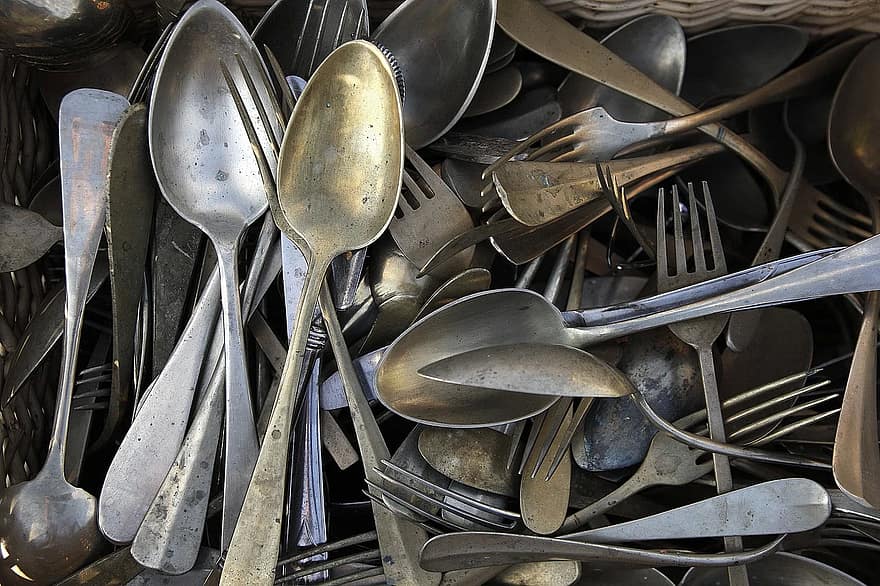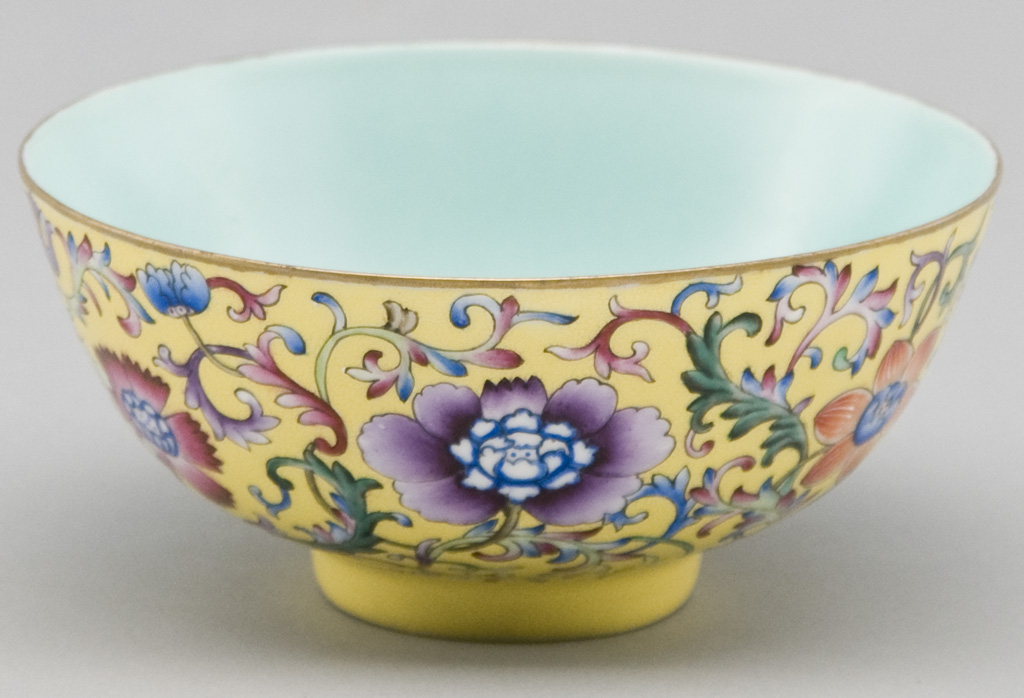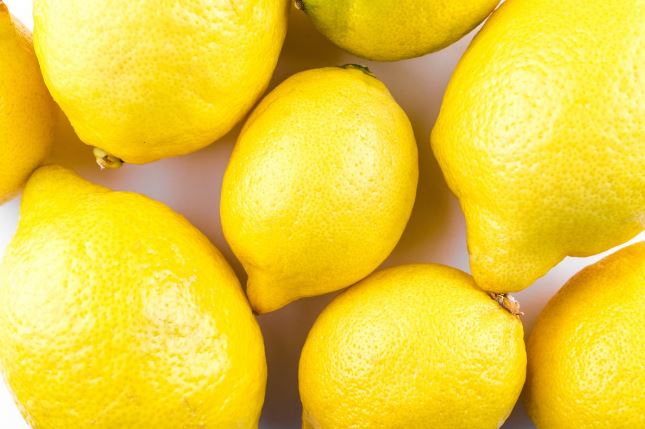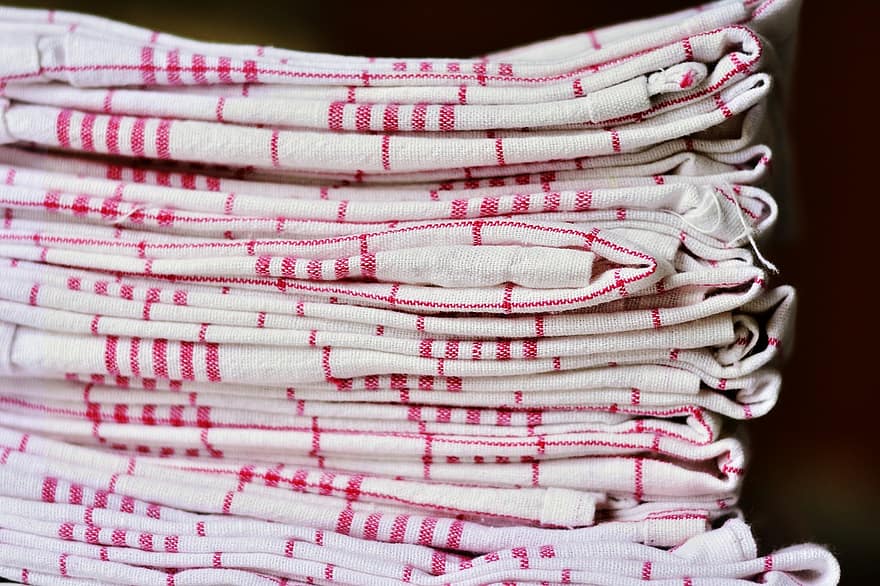How To Get Rid of Those Pesky Rust Spots On Your Cutlery
It wasn’t until I moved into our current house that I started noticing increasing amounts of suspicious rust spots on my nice kitchen knives and cutlery. I was so perplexed! They are stainless steel and I have never had too much of a problem before. So what is going on? And are they salvageable?

There are many reasons why you can find rust spots on your cutlery and dishes from being cleaned in the dishwasher. Yes, you read that right—sadly it does go beyond metal cutlery. Have you ever noticed little brown spots on a porcelain dish and wondered what they are? That is a product of rust in the water floating around in your dishwasher load.

When there is rust in a dishwasher, it “floats” around during the washing cycle. Floating rust can settle anywhere in the dishwasher. This can cause brown spots on porcelain, which resemble rust.
To remove rust stain from porcelain dishes:
1. Set the dish on a flat surface and pour white vinegar directly onto the stain so that it is covered with a small puddle. If the stain is on the edge of the dish and cannot be soaked this way, soak a sponge or cloth with vinegar and lay it on the stain instead.
2. Allow the area to soak for at least 10 minutes.
3. Wash the dish with warm, soapy water to rinse away the vinegar and rust.
4. Dry the plate immediately with a soft towel.
What causes rust on dishes or cutlery?
Rush can be caused by a number of things. Here are a few causes:
1. Water Pipes. The water pipes leading to the dishwasher can be made from a variety of materials, such as galvanized steel, copper and brass. The different metals can react with each other, causing corrosion to form in the pipes. The corrosion will eventually lead to rust in the water leading to the dishwasher. I suspect this is why it is happening in this new house. Old pipes that probably have corrosion causing rust in our water.
2. Leaving cutlery in water. Cutlery being left wet in a dishwasher both prior to washing and afterwards can cause rust. The damp humid conditions provide the perfect environment for rust spoors to develop.

3. Food deposits left on cutlery. Foods that are left on the cutlery, rather than being rinsed off prior to washing can cause rust--especially foods that are high in salt or highly acidic like tomatoes or lemons.
4. Washing dissimilar metal types in a dishwasher at the same time--which causes electrolytic deposits to occur.
5. Chemicals found in some strong detergents. If you notice this happening a lot, you might want to consider switching to a more mild dishwasher detergent.
HOW TO PREVENT RUST FROM CUTLERY
The best thing you can do to help alleviate this problem is to not leave dirty, un-rinsed cutlery stacked in a dishwasher. After the dishwasher has finished its cycle immediately remove the cutlery and dry it thoroughly with a tea towel as soon as you can. This goes for any metal cutlery, pans or even stainless steel utensils you might have like cheese graters, tongs, etc.

If you hand-wash your utensils, use a soft sponge, and dry them right away.
HOW TO REMOVE RUST FROM CUTLERY
Fortunately, unsightly rust spots can be removed easily with a paste of one part baking soda to three parts water. Rub the paste gently onto the stainless steel with a soft cloth. Rinse and dry right away with a tea towel. You could also use Bar Keeper’s Friend instead of the baking soda paste if you’ve got it on hand. That also works really well.
To tackle items with significant rust, submerge your rusty tools or knives in a bowl of vinegar and let them sit overnight. Once they have had a good soak, remove them from the vinegar and scrub the rust off with steel wool or a wire brush. (This may require some elbow grease.)
Do you have any tips for removing rust from cutlery or other dishes? Please share your tips and tricks in the comments below.

There are many reasons why you can find rust spots on your cutlery and dishes from being cleaned in the dishwasher. Yes, you read that right—sadly it does go beyond metal cutlery. Have you ever noticed little brown spots on a porcelain dish and wondered what they are? That is a product of rust in the water floating around in your dishwasher load.

When there is rust in a dishwasher, it “floats” around during the washing cycle. Floating rust can settle anywhere in the dishwasher. This can cause brown spots on porcelain, which resemble rust.
To remove rust stain from porcelain dishes:
1. Set the dish on a flat surface and pour white vinegar directly onto the stain so that it is covered with a small puddle. If the stain is on the edge of the dish and cannot be soaked this way, soak a sponge or cloth with vinegar and lay it on the stain instead.
2. Allow the area to soak for at least 10 minutes.
3. Wash the dish with warm, soapy water to rinse away the vinegar and rust.
4. Dry the plate immediately with a soft towel.
What causes rust on dishes or cutlery?
Rush can be caused by a number of things. Here are a few causes:
1. Water Pipes. The water pipes leading to the dishwasher can be made from a variety of materials, such as galvanized steel, copper and brass. The different metals can react with each other, causing corrosion to form in the pipes. The corrosion will eventually lead to rust in the water leading to the dishwasher. I suspect this is why it is happening in this new house. Old pipes that probably have corrosion causing rust in our water.
2. Leaving cutlery in water. Cutlery being left wet in a dishwasher both prior to washing and afterwards can cause rust. The damp humid conditions provide the perfect environment for rust spoors to develop.
3. Food deposits left on cutlery. Foods that are left on the cutlery, rather than being rinsed off prior to washing can cause rust--especially foods that are high in salt or highly acidic like tomatoes or lemons.
4. Washing dissimilar metal types in a dishwasher at the same time--which causes electrolytic deposits to occur.
5. Chemicals found in some strong detergents. If you notice this happening a lot, you might want to consider switching to a more mild dishwasher detergent.
HOW TO PREVENT RUST FROM CUTLERY
The best thing you can do to help alleviate this problem is to not leave dirty, un-rinsed cutlery stacked in a dishwasher. After the dishwasher has finished its cycle immediately remove the cutlery and dry it thoroughly with a tea towel as soon as you can. This goes for any metal cutlery, pans or even stainless steel utensils you might have like cheese graters, tongs, etc.

If you hand-wash your utensils, use a soft sponge, and dry them right away.
HOW TO REMOVE RUST FROM CUTLERY
Fortunately, unsightly rust spots can be removed easily with a paste of one part baking soda to three parts water. Rub the paste gently onto the stainless steel with a soft cloth. Rinse and dry right away with a tea towel. You could also use Bar Keeper’s Friend instead of the baking soda paste if you’ve got it on hand. That also works really well.
To tackle items with significant rust, submerge your rusty tools or knives in a bowl of vinegar and let them sit overnight. Once they have had a good soak, remove them from the vinegar and scrub the rust off with steel wool or a wire brush. (This may require some elbow grease.)
Do you have any tips for removing rust from cutlery or other dishes? Please share your tips and tricks in the comments below.
Sources:
- www.antiquesilver.org
- www.pxhere.com
- www.gastropod.com
- www.pixabay.com
 Mary Richardson
Mary Richardson
Weekly Newsletter Contributor since 2014
Email the author! mary@dvo.com
